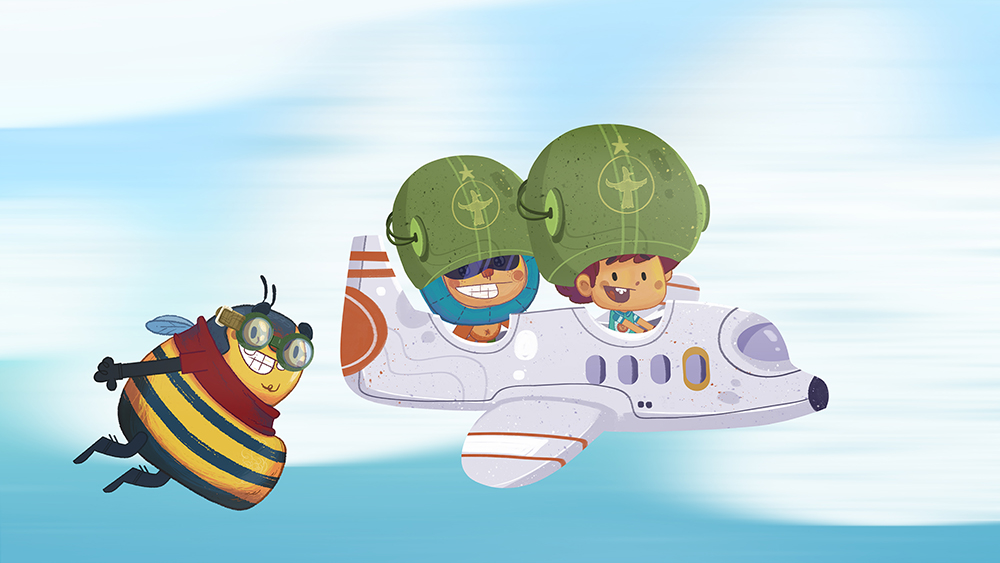Have you ever wondered why it is so important to let kids free their imagination?
And why are animations so focused on teaching kids to be more imaginative?
Well, animation has the power to connect with children and teach them about many things they should know in life, and having a better sense of imagination is one of them.
In this blog post, we’ll tell you about eight reasons that animation can lead kids to use their imagination more and how this could help them learn a variety of skills and achieve better things in life.
But first, let’s address the power of animation in grabbing children’s attention.
Why Does Animation Capture Children’s Attention More Effectively than Other Forms of Media?
Animation is like a magnet for children, and unlike static images or texts, it offers dynamic visuals that easily hold kids’ attention. The combination of sight and sound in animated storytelling, like catchy theme songs, character voices, and interesting character designs, stimulates multiple senses, which makes it impossible for children to look away. It is like stepping into a whole new world, where every sound and color tells a story that they can’t help but get lost in.
What is Animation’s Role in Driving Children to Imagine?
Imagination is the backbone of child development, fostering creativity, problem-solving skills, and emotional intelligence. Through imaginative content, children explore hypothetical scenarios, empathize with others, and develop critical thinking skills. It allows them to envision alternative realities and nurtures a sense of curiosity, essential for lifelong learning and personal growth.
Animation serves as a dynamic stimulus for nurturing children’s imagination. Its vivid visuals, diverse characters, and imaginative narratives transport young minds to enchanting worlds where possibilities are limitless. Unlike live-action media, animation transcends the constraints of reality, inviting children to delve into realms of fantasy and creativity. Vibrant colors, whimsical designs, and engaging stories captivate attention and inspire imaginative exploration.
Here are eight reasons that animation nurtures children’s imagination through animation:
1. Engagement of Multiple Senses:
Animation engages multiple senses, stimulating visual and auditory perception simultaneously. The vibrant colors, movements, and soundtracks captivate children’s attention and stimulate their visual and auditory senses. This multisensory experience enhances their cognitive development.
2. Exploration Beyond Real-world Limitations:
Animated worlds often defy the laws of physics and reality, allowing children the chance to immerse themselves in imaginative realms where the impossible becomes possible. This freedom fosters creativity and encourages them to think beyond conventional boundaries.
3. Exposure to Diverse Art Forms:
Animation comes in various styles, from hand-drawn classics to computer-generated marvels. Exposure to this diversity not only expands children’s aesthetic appreciation but also inspires them to explore different artistic mediums.
4. Encouragement of Imaginative Thinking:
Animation introduces children to characters and concepts that stretch their imaginations, from talking animals to magical creatures. Through these fantastical elements, kids learn to embrace unconventional ideas and think creatively.
5. Foundation for Innovation and Original Thinking:
Animation can help to develop a strong imagination and build a good foundation for innovation, critical thinking, and emotional intelligence, leading kids to think outside the box.
6. Promotion of Problem-solving Skills:
Imaginative play inspired by animated characters and scenarios encourages children to devise creative solutions to fictional challenges. This nurtures their problem-solving abilities and teaches them to think flexibly and make better decisions in challenging situations.
7. Social Interaction:
Many animated stories involve teamwork and cooperation among characters, teaching them the power of working together. When children engage in imaginative play based on these narratives, they learn valuable social skills such as communication, negotiation, and collaboration.
8. Moral Dilemmas:
Many animated films and series feature intricate plots and moral dilemmas that prompt children to ponder ethical questions and consider multiple perspectives. This encourages critical thinking and the development of empathy as they relate to characters’ struggles.
Developing Imagination through Animation
Through animated content, children can improve their imagination skills, which could then help them to envision solutions to challenges, invent new ideas, and approach life with enthusiasm, resilience, and a sense of possibility.
And it is so rewarding for us at Axtaar Studio to be a part of this generation’s memories and help them grow their imagination and fuel their desire to explore and learn.






